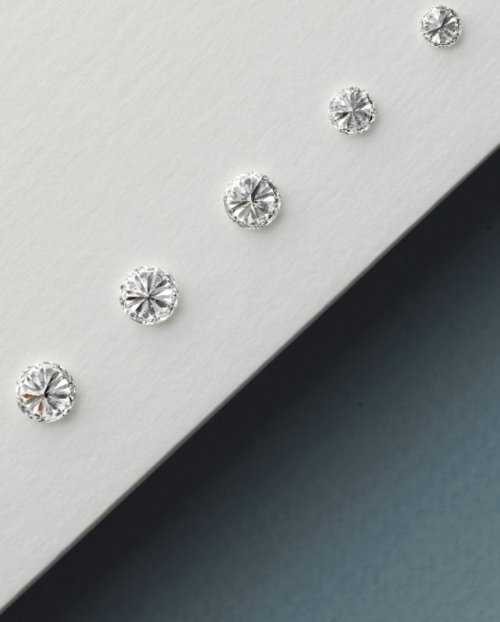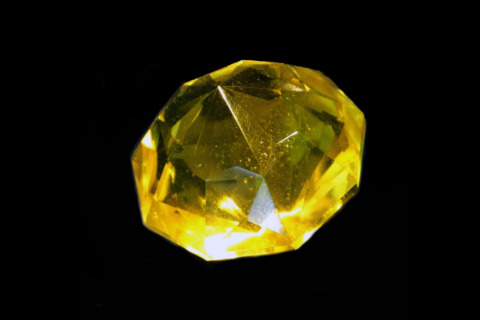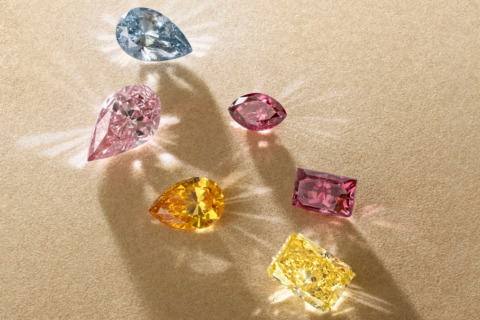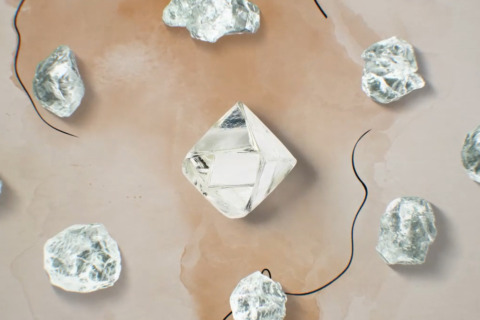Contents
What are the 4Cs and why do they matter?
Cut: the art of light and proportion
Clarity: nature’s signature in every gemstone
Color: the subtle hues that influence value
Carat: it’s about weight, not just size
Which of the 4Cs should I consider when buying a diamond?
Debunking misconceptions about the 4Cs
Diamonds aren’t just a girl’s best friend – they’re symbols of love, light and style, with a serious habit of stealing the spotlight.
From Jackie Kennedy’s legendary 40-carat marquise-cut gemstone to the white, elongated oval-cut dazzler that sits on Hailey Bieber’s second (yes, second) engagement ring, those in-the-know will tell you that the most iconic diamonds on record always rank highly when it comes to four important features: the 4Cs.
The 4Cs stand for cut, clarity, color and carat, and put simply, they’re the key factors that determine a natural diamond’s value and brilliance.
Whatever it is on your shopping list – perhaps you’re eyeing a sleek solitaire like Victoria Beckham’s three-carat marquise (one of her rumored 15 engagement rings!) or something a little bolder, like Sarah Jessica Parker’s five-carat, emerald-cut diamond ring – understanding the 4Cs means you can shop smarter and make your choice with confidence.
What are the 4Cs and why do they matter?
The 4Cs – cut, clarity, color and carat – aren’t just gemstone jargon, they’re the global standard for judging a diamond’s quality and monetary value. But it wasn’t always this clear.
Before the 4Cs, diamond grading or valuing was chaotic. Jewelers used vague terms like ‘without flaws’ or ‘like water,’ making it hard for buyers to understand what they were really getting. Only carat weight had a consistent measure, dating back to the 1500s1. This could lead to miscommunication, mistrust and uncertainty, especially for first-time buyers.
Enter Robert M. Shipley, founder of the Gemological Institute of America (GIA), who coined the term ‘4Cs of diamond quality’ in the 1940s to help his students – and the diamond industry – standardize the way we talk about diamonds2.
What started as an insider’s tool soon became a global rating system, with the 4Cs transforming diamond buying into a more transparent and trustworthy experience.
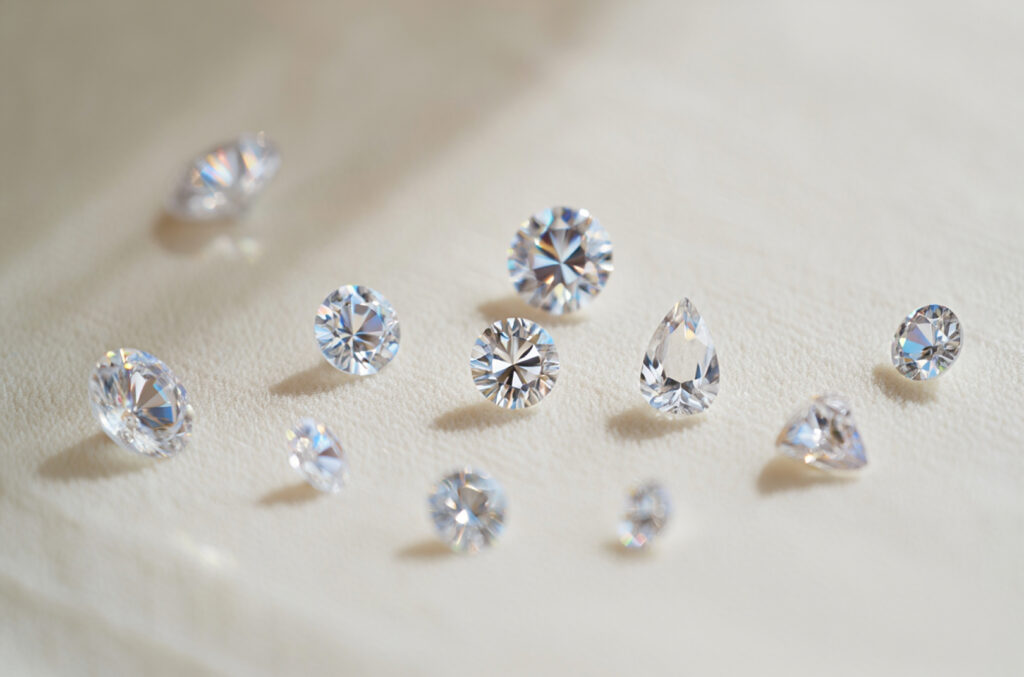
Cut: the art of light and proportion
Not to pick favorites, but it’s all about the cut.
Often confused with shape (that’s the ‘silhouette’, like pear, heart, round etc.), a diamond’s cut refers to its proportions (the angles and sizes of the facets, which help the diamond reflect light) along with its polish (how smooth its surface is, which determines its shine) and its symmetry (how well the shape and facets line up with one another).
When executed to perfection, a well-cut diamond creates three effects: brilliance (white light reflections), fire (flashes of rainbow color) and scintillation (that iconic sparkle when the diamond moves).
Read > How cut reveals brilliance in natural diamonds
Even a diamond with top-tier clarity, with no inclusions or flaws whatsoever, can look lackluster if it’s poorly cut. That’s why gemologists often rank cut as the most important of all the 4Cs.
The GIA grades cut on a scale from Excellent to Poor3, so it’s easy to know if your diamond is giving main character energy!
Clarity: nature’s signature in every gemstone
Because natural diamonds are entirely organic, formed under intense pressure and heat deep within the Earth, it’s very common for them to contain what’s called ‘inclusions’ – internal flaws or blemishes.
These features, like small chips, feathering, graining and pinpoints, are the individual birthmarks of a natural diamond, meaning no two are ever the same.
The diamond clarity scale, developed by the GIA, ranges from Flawless (F), where no imperfections are visible under 10x magnification, to Included (I1, I2, I3), where inclusions or flaws are more noticeable4.
Many diamonds graded Slightly Included appear completely flawless to the naked eye, especially once they’re set in a ring or necklace, as their inclusions can only be seen under a microscope.
Read > The rarity of high clarity natural diamonds
While clarity can impact price and monetary value, it doesn’t necessarily affect a diamond’s beauty. Diamonds with inclusions can still sparkle, and their quirks simply add character. They make them authentic and one-of-a-kind.
So, when it comes to clarity, don’t simply focus on finding ‘perfect’ – instead look for what appeals to you personally. You’ll know it when you see it.
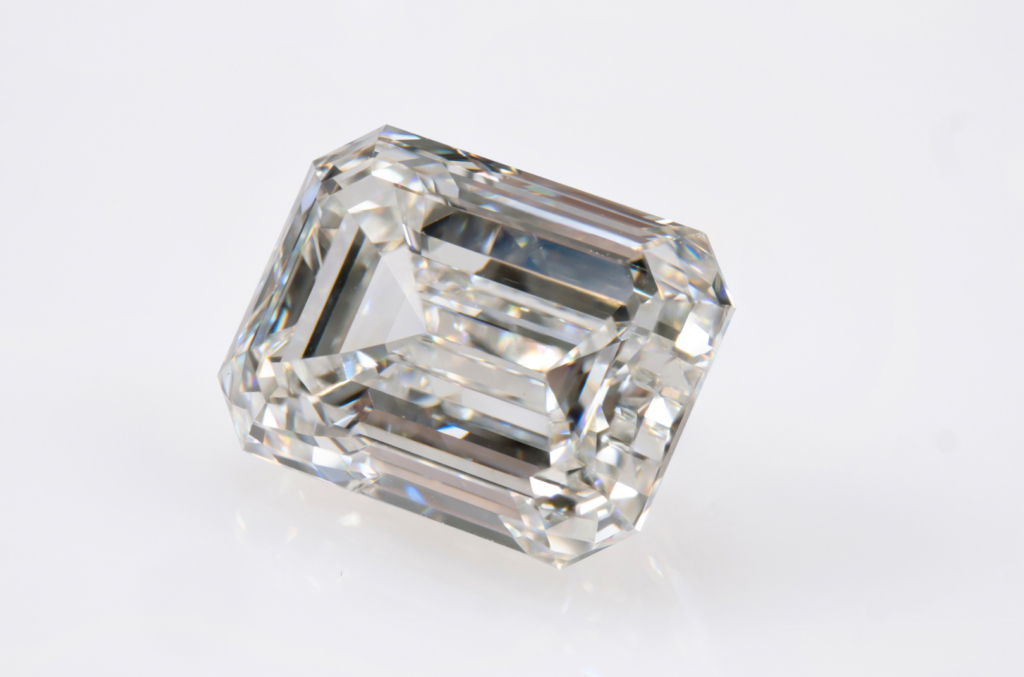
Color: the subtle hues that influence value
When people think of natural diamonds, they often picture something crystal clear and icy looking. The reality is, the color of diamonds is a spectrum, and actually when we talk about diamond color, we’re often talking about lack of color. Typically, the less color a diamond has, the rarer and more coveted it is.
To standardize the way diamond color is assessed, the GIA developed the D-to-Z color scale. It has 23 color grades, starting at D (completely colorless) and ending at Z, spanning a spectrum of diamonds that have tiny hints of cream, ochre, gray or brown, including gems like champagne diamond and whiskey diamond.
Evaluating diamond color isn’t about guesswork; it’s science. Professionals compare each diamond to master stones under controlled lighting conditions to ensure precise grading. And while differences between grades can be incredibly subtle to the untrained eye, they can make a big difference in value. Diamonds that are graded D or near to it are very rare and valuable5.
Read > The color spectrum of natural diamonds
When buying a natural diamond, color scale isn’t everything, though. In some settings, near-colorless diamonds ranked G–J can look just as stunning as ones ranked D–F for example, especially if they’re well-cut, these are sometimes highlighted as sunlit white diamonds. That makes them a great option for savvy buyers who want show-stopping beauty without eye-watering costs.
And who’s to say that creamier, golden-hued or even brown-colored within the desert diamond color pallete aren’t beautiful too? At the end of the day, it’s all down to personal taste. See our guides to honey diamond and brown diamond.
Then we come to fancy colored diamonds: these vibrant gemstones fall outside the traditional grading scale and come in mesmerizing hues like bright yellow, orange, pink, blue, red and green.
The result of fascinating natural quirks, blue diamonds, for example, get their tint from trace amounts of boron6. Yellow diamonds owe their color to nitrogen7 and pink diamonds (think Blake Lively’s stunning rose-hued oval-cut diamond engagement ring) get their color from structural changes during formation8.
Carat: measuring weight, not just size
A diamond’s carat can often be mistaken for size, however it’s actually a measure of weight. One metric carat equals 200 milligrams (about the weight of a paperclip).
For extra precision, each carat is split into 100 points (thus a 0.25ct diamond is called a ‘twenty-five pointer’). That’s why jewelers can describe stones down to the hundredth and even thousandth of a carat.
Due to their turbulent journey from the Earth’s mantle to a recovery site billions of years later, larger carat natural diamonds are very rare. The biggest natural diamond to so far be discovered is the Cullinan Diamond. Discovered in 1905 in South Africa, it weighed a whopping 3,106 carats in rough form9.
Don’t be fooled into thinking that, say, every one carat diamond always looks the same. A diamond’s visual size can vary based on its individual cut and proportions. A shallow cut could make a diamond appear larger on your finger for example, despite it being the same carat as a smaller-looking, deeper cut gemstone.
Diamonds that weigh round numbers, like 0.5, one or two carats, are considered ‘magic sizes’ due to their desirability (saying you have a one-carat diamond versus a 0.98-carat diamond sounds catchier!), but they often come with a hefty price tag10. Yet a 0.98-carat or 1.99-carat diamond could look nearly identical in size to those pricey full-carat stones while costing a whole lot less.
Much like color and clarity, carat weight alone doesn’t always guarantee monetary value. Two diamonds of the same weight might differ hugely in price depending on a combination of the other Cs, especially cut. So don’t fall into the ‘bigger is better’ trap!
A well-cut, lower-carat gemstone can outshine a heavier one that has a lower grading in the other Cs.
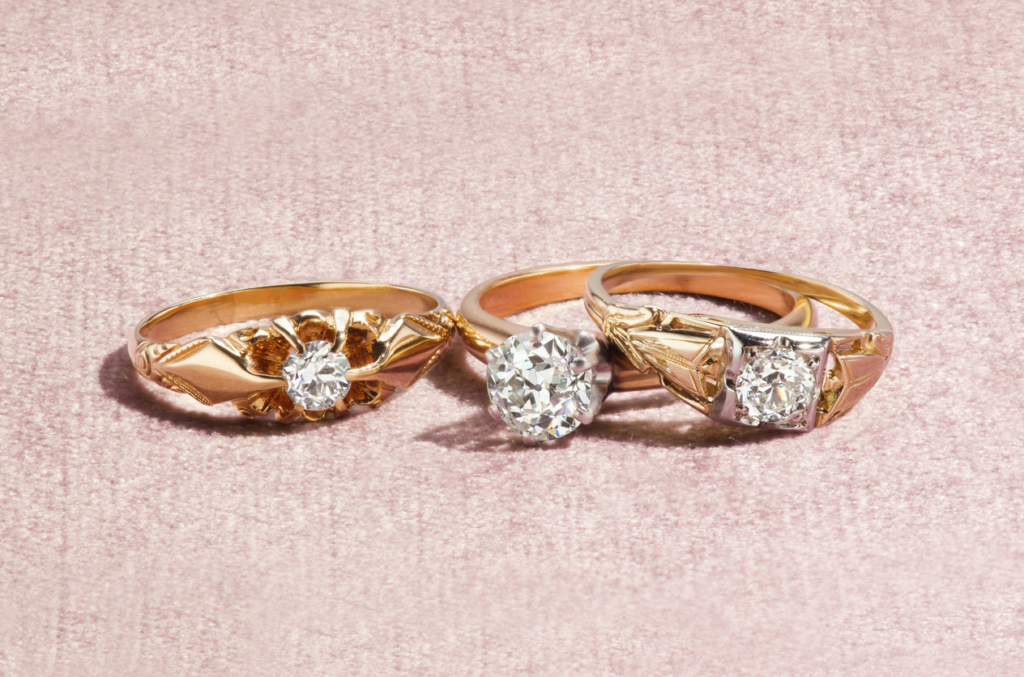
Which of the 4Cs should I consider when buying a diamond?
Not everyone shops for a diamond the same way: some are all about the sparkle, some focus purely on visual size, while others look for character. Depending on what you’re after, here are our buying tips…
Can I get brilliance on a smaller budget?
Start with an excellent cut. This has the biggest impact on how much your diamond sparkles. Then, opt for near-colorless options in the G–J range on the diamond color chart, which look virtually the same as higher grades once set. For diamond clarity, ask your jeweler to show you ‘eye-clean’ diamonds (where imperfections can’t be seen by the naked eye) graded SI1 or SI2 to save cash, without sacrificing beauty. To stay within budget, be flexible on carat and go for gems outside of the ‘magic’ weights. These still deliver on wow factor but for less.
How do I find a diamond with individual character?
If you’re after something a little different, consider vintage or antique diamond cuts like old mine or rose cuts, which often come with unique visible inclusions (poetically described as ‘nature’s love notes’). A diamond with a one-of-a-kind inclusion or warm tint can make your piece feel super personal and special. Clarity and color may rank lower here, but does it matter when emotional value gets full marks?
What do I buy if I’ve got investment in mind?
While it’s impossible to definitively say what keeps its value in the future, if you’re looking for a natural diamond as a financial investment, it’s probably sensible to focus on rarity. We’re talking high clarity grades (VS1 and above), colorless diamonds (D–F on the scale) and larger carat weights (especially over one or two carats).
Can I simply be led by intuition?
Whether you’re celebrating love, honoring a memory, planning a surprise or self-gifting, your choice of natural diamond can reflect your personal style, values and the stories you want to tell. It’s completely fine to not get bogged down by detail and just go with your gut.
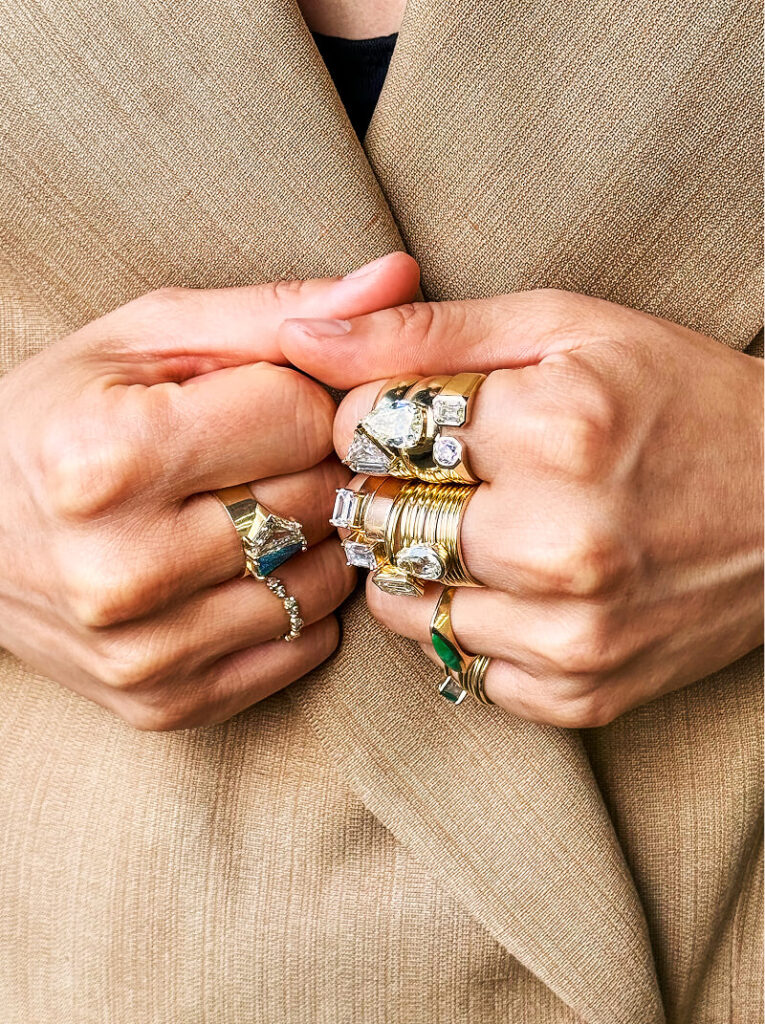
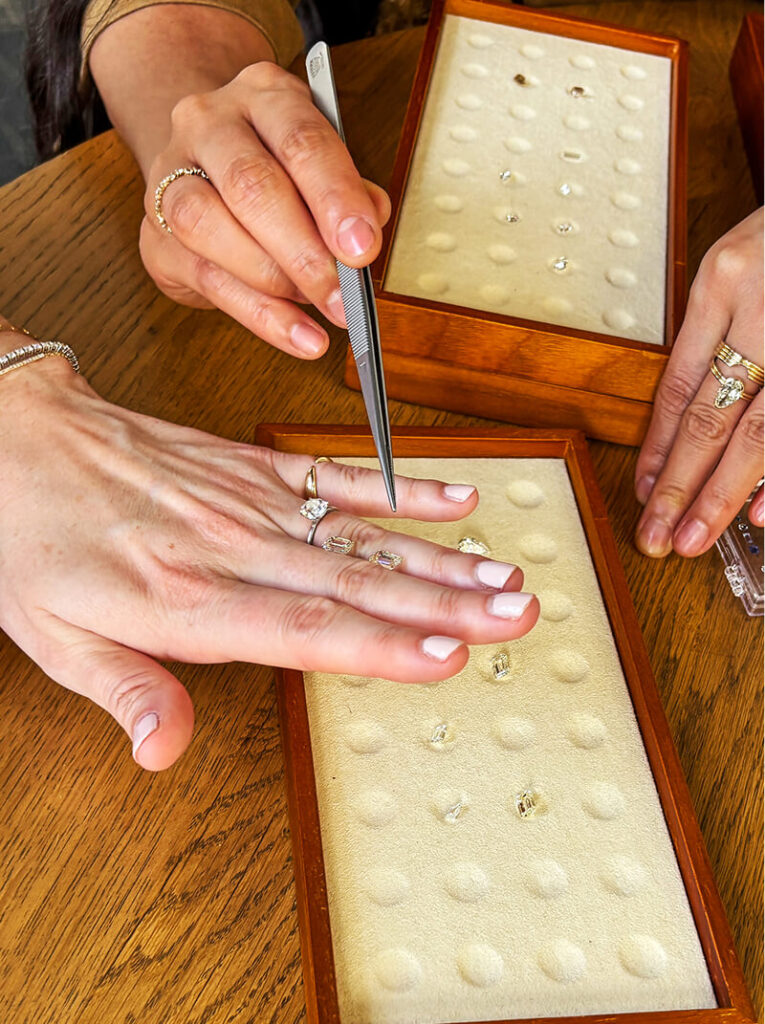
Debunking misconceptions about the 4Cs…
If you come away with anything from this guide to the 4Cs, we hope it’s clarity on what they mean (excuse the pun) and a better understanding of how they affect the price, long-term value and visual appearance of natural diamonds.
Whether it’s upselling by a jewelry store or historic (and possibly a little outdated) notions about style and status, there are lots of myths about the 4Cs and what matters when buying a diamond. Let us help decipher what’s fact or fake news…
Bigger isn’t always better
While a higher carat weight might sound impressive, size alone doesn’t equal sparkle. A poorly-cut two carat diamond can look pretty dull next to a one carat diamond with an excellent cut. Brilliance, fire and scintillation are all driven by proportions, not just weight.
Perfect clarity isn’t essential
Flawless diamonds are incredibly rare and priced accordingly. But often, inclusions in diamonds graded Slightly Included (SI1 or SI2) or Very Slightly Included (VS1 or VS2) are completely invisible to the naked eye. That means you could still land yourself a diamond that appears flawless without paying the ‘perfect’ premium.
Not only D-color diamonds are beautiful
D-color is the top of the GIA color scale, sure. But unless you’re comparing it under controlled lighting next to a master stone, you likely won’t spot the difference between a D and a G. Near-colorless diamonds (G–J) can offer also look colorless once set in jewelry, especially when set in yellow or rose gold.
The 4Cs aren’t everything
The 4Cs of diamonds are important to be aware of when buying a diamond, so you’re not confused by industry jargon and understand how gemstones are priced. A diamond’s origin, craftsmanship and story also play a key part in its emotional and long-term value.
Above all, natural diamonds are more than numbers on a grading report. Choose one that feels meaningful, aligns with your values and shines in all the ways that matter most to you.
Sources
- Gemological Institute of America, Understanding the 4Cs ↩︎
- Gemological Institute of America, Understanding the 4Cs ↩︎
- Gemological Institute of America, Understanding the 4Cs ↩︎
- Gemological Institute of America, Understanding the 4Cs ↩︎
- Gemological Institute of America, Diamond color ↩︎
- Carnegiescience.edu, What makes diamonds blue? ↩︎
- Cape Town Diamond Museum, Top 10 facts about yellow colour diamonds ↩︎
- Alldiamond.co.uk, Pink fancy-coloured diamonds explained ↩︎
- Britannica, Cullinan Diamond ↩︎
- Gemological Institute of America, Diamond carat weight ↩︎
